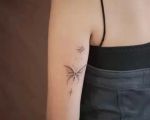Introduction to Tattoo Shops in California
California is home to a vibrant tattoo culture, with artists and shops spread across the state, from bustling cities like Los Angeles to smaller towns. But in December 2020, the situation was different due to the COVID-19 pandemic. Many businesses, including tattoo shops, had to adapt to the new normal with different rules and regulations that varied across counties. As we explore whether tattoo shops were open during this time, we need to consider local restrictions, health guidelines, and the broader impact of the pandemic on California's art community.
How COVID-19 Impacted Tattoo Shops in California
The pandemic had a significant effect on the tattoo industry in California, with many shops temporarily closing their doors due to government orders. In early 2020, all non-essential businesses were forced to close, and tattoo shops were categorized as non-essential. However, as restrictions began to ease later in the year, certain regions allowed businesses, including tattoo parlors, to reopen under strict guidelines. This led to varying experiences across the state. Many shops implemented safety protocols, including mask mandates and social distancing measures, to comply with local ordinances.
Restrictions and Guidelines for Tattoo Shops
By December 2020, California's tattoo shops were facing a mix of regional restrictions depending on the county and city they were located in. Statewide mandates from Governor Gavin Newsom required businesses to follow strict guidelines, including limiting indoor operations, reducing capacity, and requiring appointment-only services. For tattoo shops, this meant that walk-in clients were largely discouraged, and clients were encouraged to schedule appointments in advance to minimize exposure. Furthermore, many shops introduced heightened sanitation measures, including disinfecting surfaces and tools between each customer.
Regional Differences Across California
California’s size and diversity led to differences in how tattoo shops operated across the state. While some counties in Southern California, such as Los Angeles, had stricter guidelines and more frequent lockdowns, other areas in Northern California, like San Francisco, had different regulations based on local COVID-19 case numbers. This variation meant that some tattoo shops could remain open with limited capacity or by appointment, while others had to close entirely during certain periods. It’s essential for clients to check with local shops to confirm whether they were open or not during this time.
When Tattoo Shops Could Reopen
For many tattoo enthusiasts, December 2020 was a frustrating time, as the pandemic delayed their plans for body art. As counties in California moved through different phases of reopening, tattoo shops were permitted to open gradually, but only with strict health measures in place. In many areas, businesses could only operate if they complied with industry-specific guidance, such as using personal protective equipment (PPE) and maintaining a clean environment. Shop owners and artists had to navigate these challenges carefully to ensure that they were offering a safe experience for both clients and employees.
Tattoo Artists and Health Safety Measures
Safety was the top priority for tattoo artists in California during this period. As a result, many tattoo shops implemented rigorous health measures, including enhanced sanitation protocols, temperature checks for clients, and mandatory face coverings for both artists and clients. Additionally, tattoo artists adapted their techniques to ensure they maintained physical distance from clients where possible, while also adhering to the strict guidelines issued by the state. Many shops also made changes to their booking procedures, offering virtual consultations to minimize in-person interactions.
How to Safely Get a Tattoo During the Pandemic
If you were considering getting a tattoo in California in December 2020, there were still ways to safely proceed. It was important to choose a shop that was actively following health and safety protocols, such as using disposable equipment, sterilizing tools, and ensuring that the shop was kept clean. Booking an appointment rather than walking in, ensuring proper sanitation, and maintaining social distancing were essential steps to keeping yourself and your artist safe. Before heading to a tattoo shop, clients were advised to confirm their appointment and ask about the specific safety measures the shop had in place to protect everyone involved.
Ultimately, December 2020 presented unique challenges for tattoo lovers and artists in California. While many shops were operating under stringent guidelines, they managed to continue providing tattoos while prioritizing health and safety. If you are planning to get a tattoo today, it’s essential to research local shops and their current safety protocols to ensure a safe and enjoyable experience.








